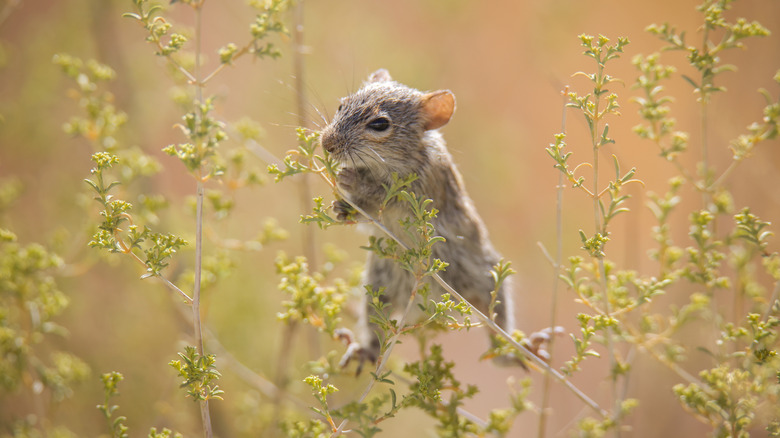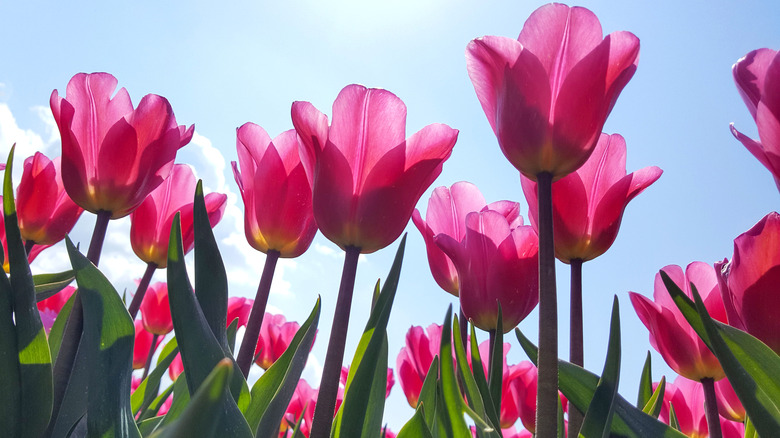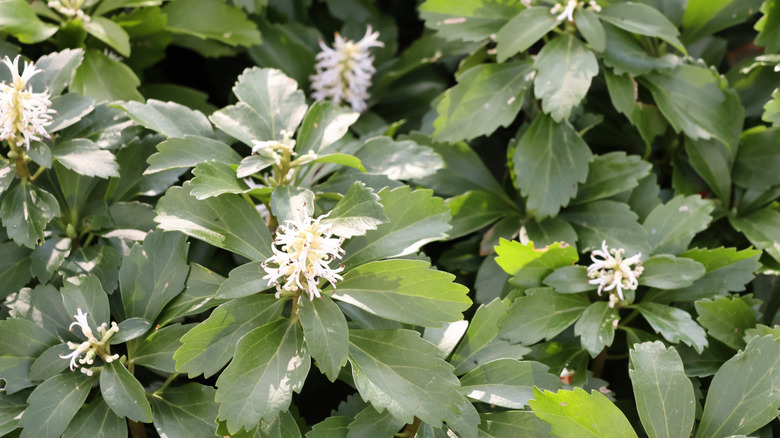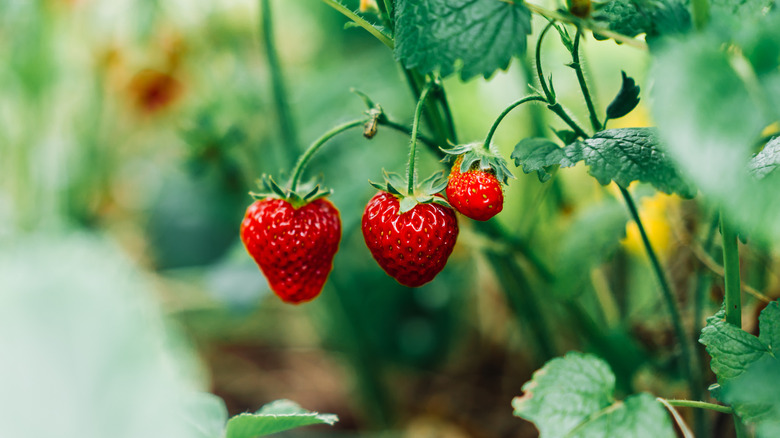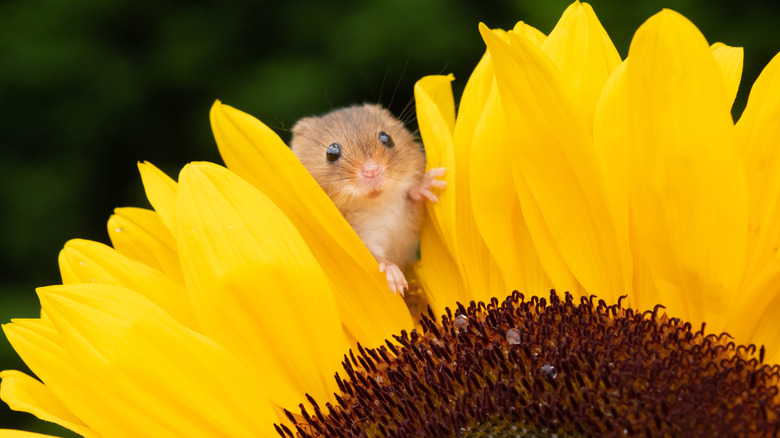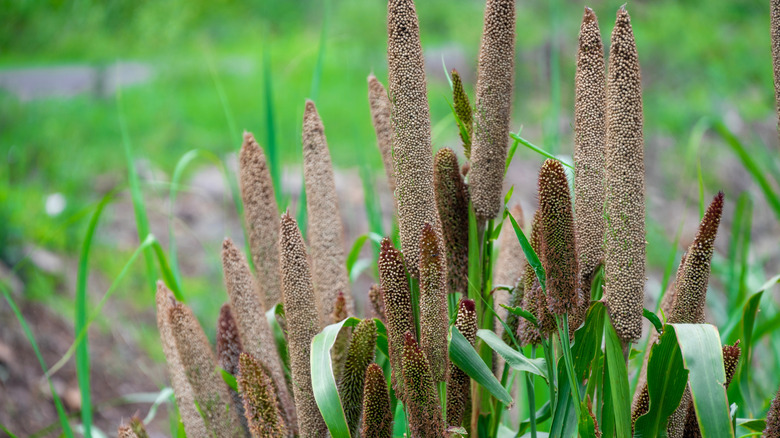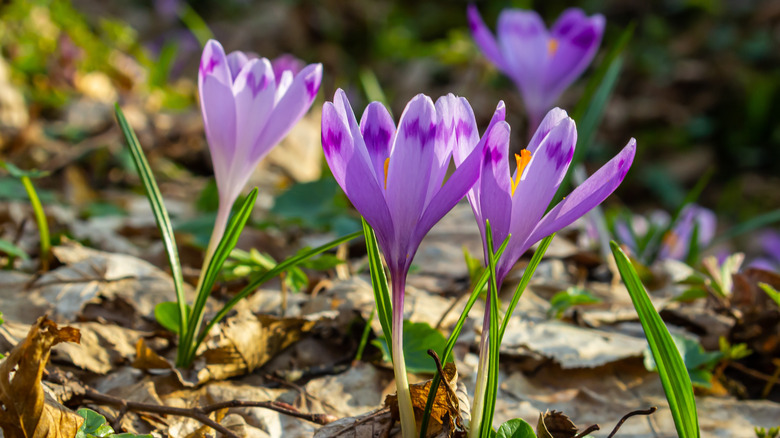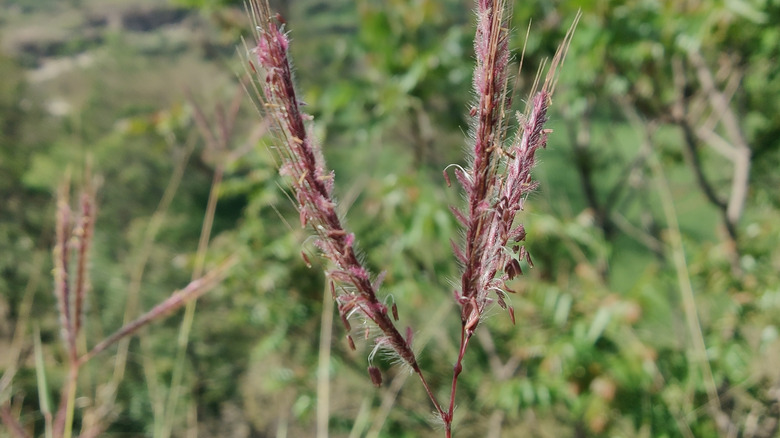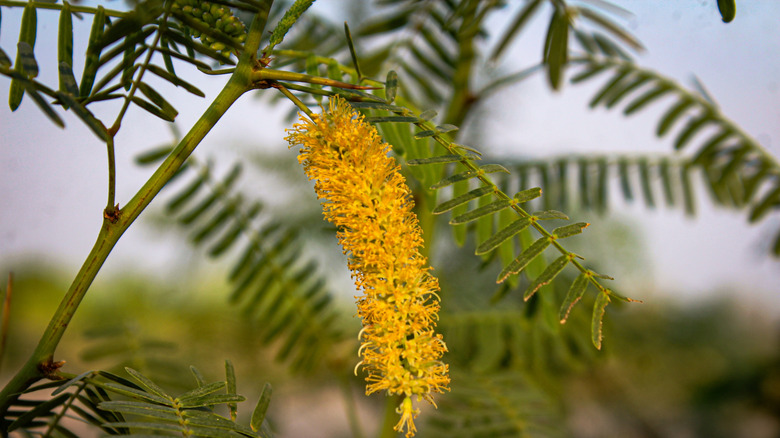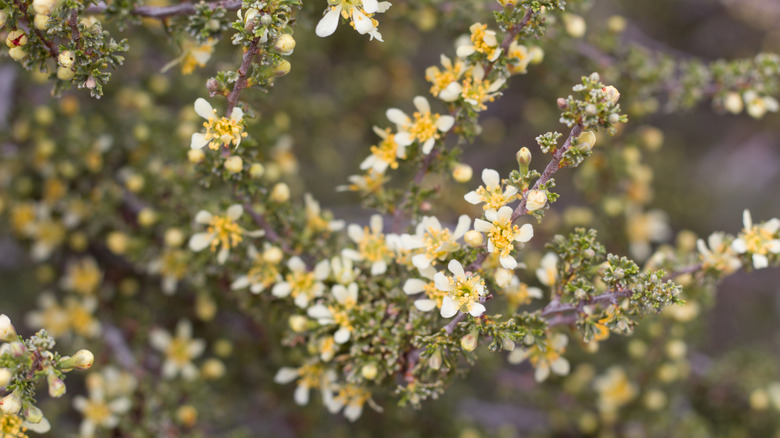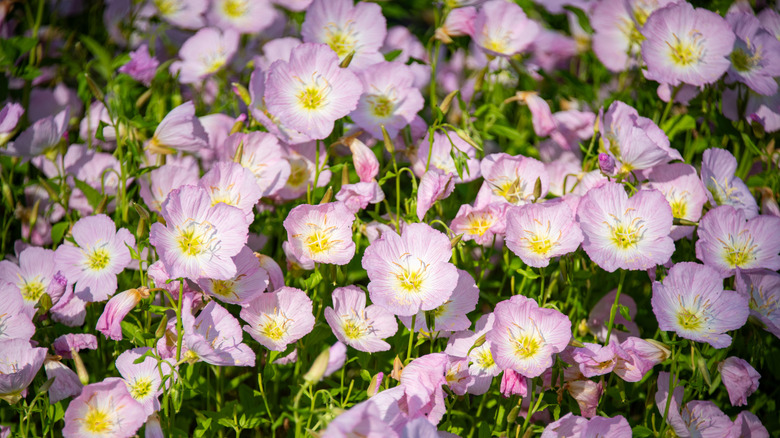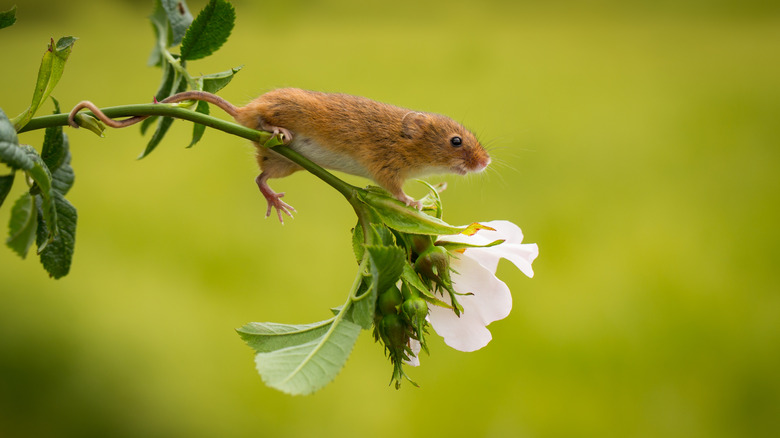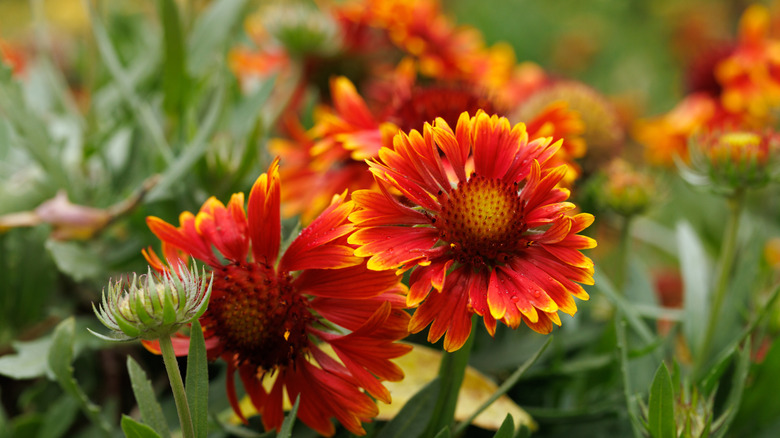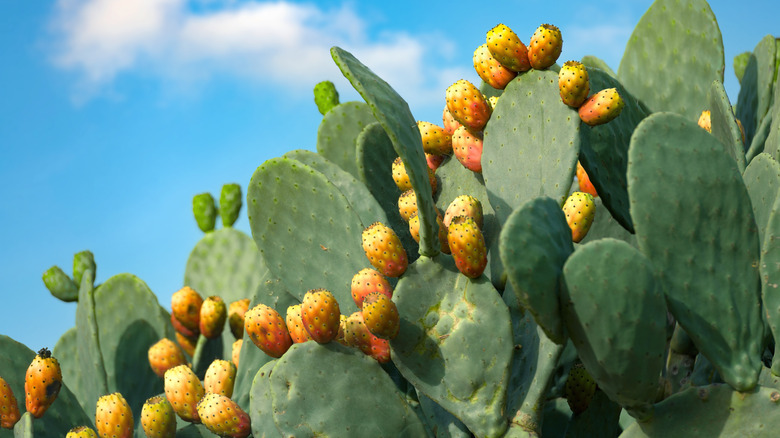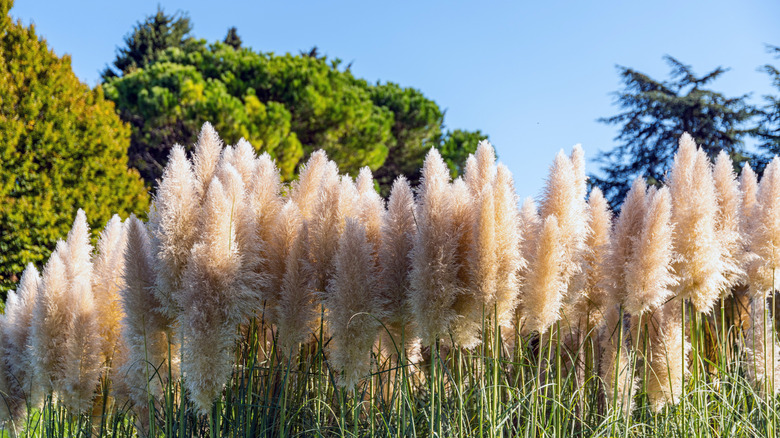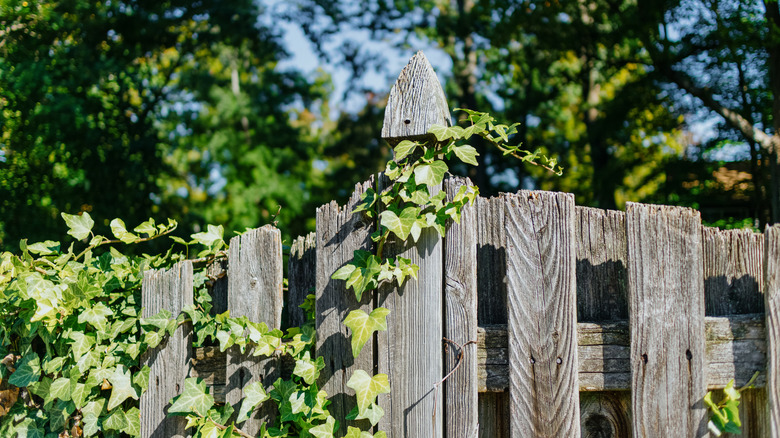Keep These 15 Plants Out Of Your Yard If You Want To Keep Mice Away
Have you ever been out in your garden, basking in its glory, when a tiny blur of fur darts past your feet? Or, perhaps you've noticed freshly dug holes, droppings, or nibbled leaves. Chances are, you've got mice, and you're likely unknowingly rolling out the red carpet with your choice of plants or veggies that can attract pesky rats. With the perfect combination of cover and snacks, your yard can have them moving in before you know it. From tulips to sunflowers to English ivy, common plants we love attract mice like magnets.
When we think about what attracts mice, piles of clutter, pet food left outside, or overflowing bird feeders come to mind. In reality, certain flowers, shrubs, and grasses provide a steady mouse buffet full of seeds, fruits, or bulbs. Other types of plants create dense little hideouts where predators can't reach them. And some plants do both, offering mice an all-inclusive resort. Once they find a spot that meets all their needs, mice tend to settle in, and that can mean more damage to your plants, fewer seeds left for birds, and a greater chance of them moving ever closer to your home. You don't want to use mouse traps in your yard — or anywhere, for that matter — as this pest control method causes considerable suffering. As an alternative, find out which plants are quietly working against you and how to swap that welcome mat for a firm "no vacancy" sign.
Tulips
Mice flock to flowering bulbs, especially some of the prettiest ones — tulips (Tulipa L.). Mice will dig up and eat the bulbs long before the flowers even have a chance to bloom since they're an easy, energy-rich food source that hides just below the surface. Once mice discover them, they often come back year after year. When even a furry rodent can't come between you and your tulips, plant them in buried wire cages.
Pachysandra
Mice love the dense foliage of pachysandra (Pachysandra terminalis) ground cover. A patch of pachysandra is the right height to give mice safe passage to wherever else their journey takes them. Its thick mat of glossy leaves stays green year-round, creating the perfect place to hide from predators. The plant's spreading habit forms an almost impenetrable carpet, ideal for mice who want to nest or tunnel. Find out everything you should know before planting pachysandra.
Strawberry bush
Strawberry plants (Fragaria x ananassa) are super adorable to grow in your yard. And mice agree. Its sweet, juicy fruit makes for an easy snack, and the thick foliage provides plenty of cozy hiding spots for nesting. Once mice discover it, they're likely to stick around, treating the plant as both a reliable food source and a safe shelter. To keep mice away, make sure to keep the grass cut around your strawberry bush and consider planting mint or basil around it.
Sunflowers
Sunflowers (Helianthus L.) are super cheery and really pretty, but their seeds will serve as a standing invitation for mice to stroll into your yard to feast on them for weeks. The sturdy stems and broad leaves can also offer a bit of shade as they eat to their heart's content. If you want to take the risk, be sure to remove sunflower seed heads before they become a ready-made food source for these unwanted garden guests.
Pearl millet
You can make your own birdseed when growing pearl millet (Pennisetum glaucum) plants, but for mice, it's also like finding an all-you-can-eat buffet. Pearl millets can be used as focal points in your yard, but their tall stalks that produce dense clusters of grain are easy for mice to reach, and the seeds are perfect for hoarding. Mice might think twice before trespassing on your space when you plant the gorgeous flower that doubles as a powerful rat repellent.
Crocus
Crocus (Crocus L.) bulbs are irresistible to mice. That's because the pretty plant's corms are starchy and rich in nutrients — big-time favorites for mice. Rodents have been known to chew through or hollow out corms, which can kill the plant or stunt its growth in the future. As mice tunnel, they can also disturb the soil around the plant, causing it to dry out quicker and eventually collapsing.
Bluestem
The tall, dense growth of bluestem (Andropogon L.) ornamental grass creates sheltered corridors where mice can move around without drawing attention, while the fluffy seed heads offer a quick and easy source of food. Since it provides year-round cover, mice can get relatively comfortable calling your bluestem their permanent home. Keep mice at bay by planting bluestem further away from your home or mix it with plants that don't have the same level of protection.
Honey mesquite tree
Honey mesquite trees (Prosopis glandulosa) are iconic in dry landscapes. As a favorite for bees, honey mesquite trees have long seed pods, which are packed with sweet, protein-rich pulp that rodents love to eat and stash away for later when the munchies hit. When you keep up with the fallen pods along the ground beneath the tree, you can help eliminate at least some of the convenient snack sitting right at mouse level.
Bitterbrush
Bitterbrush (Purshia tridentata) is a tough, drought-loving shrub that can handle just about anything nature throws at it. But to mice, it's more than just hardy. Its thick, twiggy branches create the perfect hiding spots from predators, and its seeds and seasonal leaves offer a ready-to-go snack. In open or dry landscapes, big patches of bitterbrush can give mice everything they need to stick around all year: food, shelter, and plenty of safe hiding spots.
Pink ladies
Pink ladies (Oenothera speciosa), also known as pink buttercups, are showy blooms that look pretty and whimsical in your yard, but they're an inviting setup for field mice. These flowers spread quickly into big colonies that form thick ground cover mice will be happy to nestle into. Once blooms fade, the plants produce seeds that become an easy snack, adding another reason for mice to stick around.
Climbing roses
A climbing rose (Rosa setigera) bush is a great way to bring cottagecore to your outdoor aesthetic, and it's also an excellent way to be quickly outnumbered by mice. Their dense, thorny canes make it harder for predators to get close, giving rodents a secure pathway to travel or even nest. Plus, any plant with vines increases the chances that mice will find their way into your home as well.
Indian blanket
Indian blanket (Gaillardia pulchella) is a stunning wildflower with bold red-and-yellow petals. While it's a favorite for pollinators, it can be equally enticing to small mammals looking for a bit of shelter and snacks. Indian blanket often grows in dense patches and produces seeds deer mice can't resist, especially when the blooms fade and the showy seed heads start to dry out.
Texas pricklypear
Texas pricklypear (Opuntia engelmannii) may look fierce with its spiny pads and sunny yellow blooms, but to mice, it's more like the perfect getaway. The pads grow in dense clusters, creating shady, protected spaces where small animals can hide from predators. Fallen fruit and seeds offer a ready-to-go snack bar, and the sharp spines act like built-in security. In dry, open areas, this mix of shelter and easy food makes pricklypear especially tempting for rodents looking for both safety and a steady supply of treats.
Pampas grass
Among the best ornamental grasses that double as stylish natural privacy screens, pampas grass (Cortaderia Stapf) might bring oodles of drama and texture to your yard, but for mice, it's basically the ultimate hideaway. Those tall, feathery plumes and thick, clumping bases create a cozy, tucked-away spot that's perfect for building little mice nests. Their dense growth means predators can't easily find these little critters, creating a safe, sheltered place to hang out all year long.
English ivy
English ivy (Hedera helix) might look whimsical creeping up a fence or spilling over a trellis, but it's basically like a luxury condo for mice. Its dense, tangled vines create the perfect hiding spots where predators can't reach, and the cover continues to grow all year. Mice can nest, travel, and forage without ever being seen, making ivy an open invitation for them to settle in.
